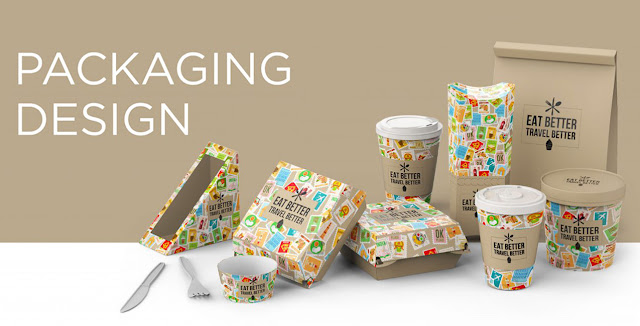The Art of Food Packaging Design: Unwrapping Creativity
In today's competitive world of food products, a well-designed package can make all the difference. It's not just about protecting the contents; it's a canvas for conveying your brand's personality and influencing consumers' buying decisions. In this blog post, we'll explore the fascinating world of food packaging design, from the importance of aesthetics to sustainability and innovation. Let's delve into how you can create packaging that not only preserves the freshness of your product but also stands out on the shelves.
The Aesthetics of Appetite Appeal:
One of the first things that draw consumers to a food product is its packaging. The colors, fonts, images, and overall design should harmonize with the essence of your brand and product. Whether you opt for a minimalist, eco-friendly look or an extravagant, eye-catching design, the packaging should be an extension of the deliciousness within. Remember, a well-designed package can create an emotional connection with your customers.
Sustainability in Food Packaging:
In today's eco-conscious society, sustainable food packaging is a hot topic. More and more consumers are looking for eco-friendly options when they shop. Consider using biodegradable materials, reducing packaging waste, and providing clear instructions for recycling. Not only does this benefit the environment, but it also appeals to a growing market of environmentally-aware customers.
Innovation and Technology:
Incorporating innovative technology into your food packaging design can set your product apart. Interactive packaging with QR codes, augmented reality, or smart labels can provide customers with additional information, recipes, or even entertainment. Moreover, features like tamper-evident seals and resealable closures can enhance the user experience and keep your product fresher for longer.
Storytelling through Design:
The design of your food packaging can be a powerful tool for telling your brand's story. Consider incorporating elements that reflect the origins of your product, your brand's mission, or the cultural influences that make your food unique. A compelling story can help build an emotional connection with your customers, driving brand loyalty.
The Practical Side:
While aesthetics are crucial, don't forget the practical aspects of food packaging design. It should protect the product from external factors like light, air, and moisture. Clear and informative labeling is essential for allergen information, ingredients, nutritional facts, and more. Ease of use, storage, and transportation should also be factored in.
Trends in Food Packaging:
Stay updated with the latest trends in food packaging design. Whether it's the rise of sustainable materials, the use of vintage aesthetics, or the minimalist approach, being aware of what's trending can give you a competitive edge in the market.
Conclusion:
Food packaging design is a blend of art, science, and storytelling. The right design can attract customers, protect the product, and communicate your brand's essence. With sustainability and innovation taking the center stage, it's essential to stay current with the latest trends and technological advancements. So, as you venture into the world of food packaging design, remember that it's not just about the wrapping; it's about the experience you provide to your customers, leaving a lasting impression on their taste buds and in their hearts.




Comments
Post a Comment